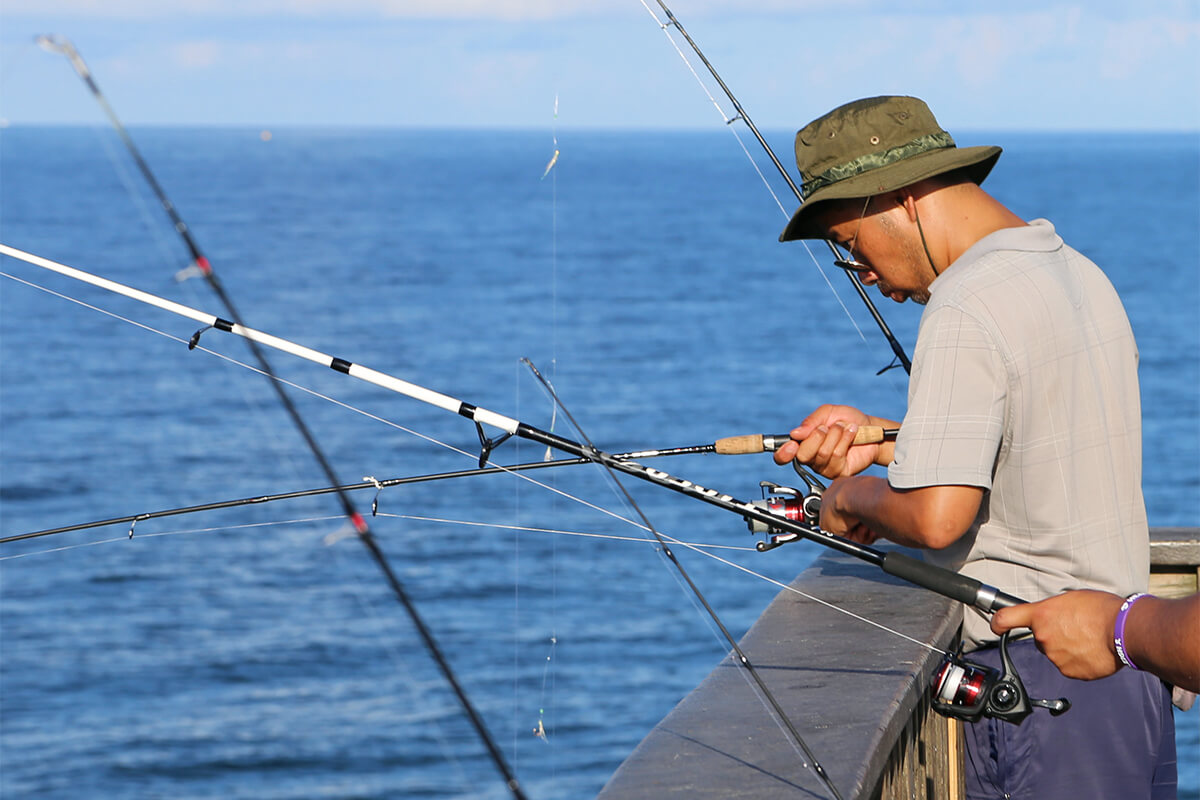Beyond the Basics: Exploring Niche Fishing Bait and Tackle for Specialty Angling
When it comes to angling, enthusiasts know that having the right fishing bait and tackle can make all the difference between a good day of fishing and a great day of fishing. While traditional fishing gear is readily available, a world of specialized tackle is waiting to be discovered. Let’s delve into the realm of niche fishing tackle, uncovering the options and exploring Reel Tackle Online for those looking to take their angling experience to the next level.
Specialty Tackle for Unique Angling Experiences
Niche fishing tackle refers to specialized or unique fishing gear and equipment designed for specific types of fishing, particular species of fish, or specific fishing environments. Unlike general-purpose tackle that can be used for a wide range of fishing situations, niche tackle is tailored to meet the particular requirements and preferences of anglers who engage in specialized forms of fishing.
A well-prepared fisherman needs a variety of bait and tackle to target different fish species and fishing environments effectively. Here is a comprehensive list of essential tackle:
- Fly Fishing. This specialized tackle is designed for fly fishing, a technique that uses lightweight artificial flies as lures. It includes fly rods, fly reels, fly lines, leaders, and various artificial flies.
- Ice Fishing. This tackle is designed for fishing through holes cut in frozen lakes or rivers. It includes specialized ice fishing rods, reels, tip-ups, ice augers, and shelters.
- Bass Fishing. Tailored specifically for catching bass, this gear may include specific types of lures like plastic worms and jigs, rods designed for accurate casting, and reels with appropriate gear ratios.
- Saltwater Fishing. Designed for use in saltwater environments, this tackle withstands the corrosive effects of salt. It includes saltwater-specific reels, rods, lines, and lures.
- Carp Fishing. Geared toward targeting carp, this tackle might include specialized rods, reels with strong drag systems, bite alarms, and carp-specific baits.
- Trout Fishing. Specialized for catching trout, this gear may include lightweight rods, reels with smooth drag systems, and an assortment of trout-specific lures.
Trolling Gear. Used for trolling, a fishing method where lines with lures or bait are drawn through the water behind a moving boat. This might involve specific reels, rods, and trolling lures. - Big Game Fishing. Designed for pursuing large and powerful fish species like marlin, tuna, and sharks. It includes heavy-duty rods, large-capacity reels, and specialized terminal tackle.
- Finesse Fishing. Finesse techniques require delicate presentations and precise control. This tackle might involve ultra-light rods, high-sensitivity reels, and small, subtle lures.
- Surf Fishing. Tailored for fishing from the shore in coastal environments. It may include long casting rods, specialized reels, sand spikes, and various baits suitable for surf fishing.
- Kayak Fishing. These are specialized accessories like kayak-specific rod holders, storage solutions, and anchoring systems designed to enhance the angling experience from a kayak.
In essence, niche fishing tackle is all about having the right tools for the specific type of fishing you are pursuing. It helps optimize your chances of success and ensures you have the appropriate gear to take on the challenges posed by your chosen fishing environment and target species. Researching and investing in quality niche bait and tackle is important to enhance your angling experience.
Hooked on Success: The Ultimate Bait and Tackle Checklist for Avid Anglers
It is helpful to assemble a checklist of various fishing tackle items essential for optimal fishing adventures.
- Fishing Rods: Spinning, fly, and telescopic
- Fishing Reels: Spinning, baitcasting, and fly
- Fishing Line: Monofilament, braided, and fluorocarbon
- Hooks: Various sizes and styles of target species and bait used.
- Sinkers and Weights: Split shot, egg sinkers, bullet weights, pyramid sinkers, and tungsten weights.
- Lures: Soft plastics, crankbaits, jerkbaits, spinners, jigs, flies, and topwater lures.
- Baits: Live bait worms and minnows, artificial, and cut bait
- Bobbers, floats, swivels, and snaps
- Fishing Tools: Pliers, line cutters, hook removers, scale and measuring tape, fishing gloves, landing nets
- Other Gear: Tackle box, first aid kit, insect repellant, sun protection, flashlight, rain gear, waders or hip boots, portable chair or stool.
- Fishing License and Regulations Guide: Ensures you are fishing legally and responsibly.
Remember that the specific tackle you need can vary depending on factors like the type of fishing you are doing, like freshwater, saltwater, or fly fishing, the species you are targeting, and the environment you are fishing in, like lakes, rivers, oceans, and ice. It is always beneficial to research and prepare accordingly for each fishing trip.
Best Fishing Tackle Online: Convenience at Your Fingertips at Reel Tackle Online
In today’s digital age, online shopping has become the go-to method for many consumers. The same applies to anglers seeking specialized tackle. Reel Tackle Online is a standout option with extensive selections, allowing you to browse a wide range of products, including those for niche fishing.
Their commitment to providing top-quality tackle at competitive prices has garnered them a reputation as a trusted resource for anglers of all levels. Their extensive catalog includes everything from rods and reels to specialized baits, ensuring you will find what you need for your next angling adventure.










